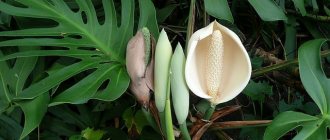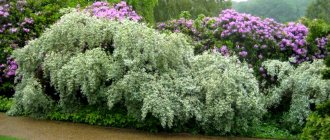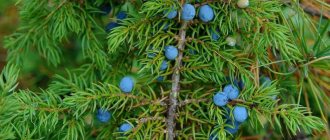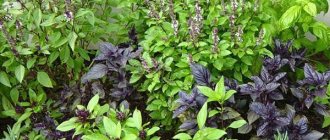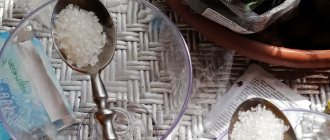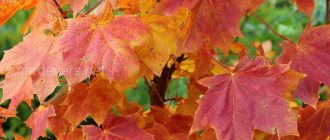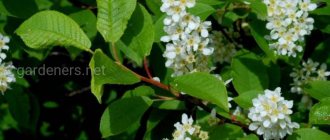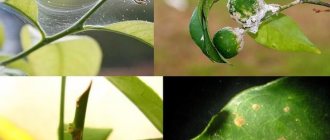Do you know the bushes that bloom literally from under the snow and envelop the surrounding area with a stunning aroma? One of the few answers is the common wolfberry (Dáphne mezéreum).
The plant has several popular names: wolf's bast, deadly wolfberry, badman, wolfberry, etc. All parts of the plant contain dangerous toxins, but the ripe berry is the biggest threat. Just 10 berries lead to serious poisoning, which can end tragically.
Common wolfberry is a plant species belonging to the Thymelaeaceae family. This deciduous shrub rarely exceeds 1.3 meters in height. The shoots are few, straight, bend easily, but are difficult to break. The bark is yellowish-gray.
Leaves are formed only at the ends of the shoots. They are alternate, elongated (up to 10 cm), tapering to short petioles, entire. The color of the upper plate is dark green with a bluish tint. The lower part of the leaf is greenish-silver.
Variety "Rubra"
The flowers are small, bell-shaped, four-petaled, very fragrant. The color is predominantly lilac, less often white, cream, lilac. Formed in bunches or singly in the axils of last year’s leaves; it seems that they are directly on the shoots.
Flowering precedes the opening of leaves and lasts more than 3 weeks. The fruits are red drupes containing shiny spherical seeds.
Wolf's Bast
Few-branched, erect shrub, up to 150 cm high, with yellowish, easily peeled bark.
The leaves of the wolf's bast are alternate, oblong-lanceolate, crowded towards the top of the shoot, dark green. The flowers are medium-sized, dark pink with a strong scent, bloom before new leaves appear. The fruits are bright red oblong-oval berries. Wolf's bast blooms in April-May. The plant is highly poisonous. The smell of flowers causes headaches.
Recipes
Compositions based on wolf bast should not be taken orally under any circumstances without the supervision of a doctor. The remedy is often used externally to increase blood flow in the chest during tracheitis, bronchitis, sore throat or pneumonia. This helps warm the chest and relieve the patient's condition.
The dried bark is soaked in water or vinegar, and then tampons, like mustard plasters, are applied to the chest. This treatment is strictly prohibited for citizens with heart failure, children, pregnant women, and people suffering from allergic reactions.
Wolf bast use in folk medicine
In folk medicine, an alcohol tincture of the bark and fruits of wolf bast (50 g of raw material per 500 ml of vodka, leave for 3 weeks in a dark place, shaking occasionally) is used externally for gout, neuralgia, and sciatica.
For paralysis of the tongue muscles, preparations from the bark are also used. In case of paralysis of the tongue muscles, alcohol tincture from the bark, dissolved in a teaspoon of water, you just need to hold it in your mouth for a while without swallowing.
Internal preparations from wolf bast are taken very carefully, due to their toxicity. For dropsy and scrofula, an extract from the roots is taken orally.
The bark is collected in the spring, the fruits - after ripening.
Wolf's bast is a highly poisonous plant. The bark is especially poisonous. The people gave him the nickname "wolf's bast." Six berries are enough to kill a wolf. And a person, after eating a few berries, will feel a burning sensation in his mouth, terrible thirst, and his body will begin to cramp. Death often occurs.
We read from Avicenna: “Very harmful to the liver. Two dirhams are lethal for a person. It kills, causing melancholy, vomiting and diarrhea...” So this plant cannot be treated in a friendly manner.
Medicinal properties of wolf's bast.
And the benefits from the wolfman come great. For any kind of disease he comes to the rescue: here are thrombosis, thrombophlebitis, paralysis, neuralgia, rheumatism, gout; and fungal skin lesions, itchy dermatoses, conjunctivitis, toothache, sore throat; and gastrointestinal diseases, colitis, ascites; and also such terrible diseases as malignant tumors of the throat, esophagus, stomach, uterine cancer, leukemia.
The use of the wolf's bast plant in the treatment of stomach and intestinal cancer.
Leave one gram, at most two grams of crushed fruits in a glass of distilled water for 10–12 hours. Take 5-7 drops 3-4 times a day in a glass of water after meals.
Medicinal plant wax bast for paralysis of the tongue muscles
Hold the bark tincture in your mouth for a while and spit it out. The tincture is prepared from 2 g of bark per 1 glass of vodka. Leave for 5-7 days.
The use of wolf's bast for inflammation of the trigeminal nerve.
A bark decoction helps: pour 2 g of bark into 200 ml of hot water, boil over low heat for 20 minutes, strain while still hot, squeeze. Add boiled water to the original volume. Take 5 drops 3 times a day after meals. The course of treatment is 5 days.
Medicinal plant wax bast used for leukemia.
Take 1 dried berry per day (swallow). The berries have high anti-leukemic activity. The dose indicated is for an adult. Do not give to children.
Folk use of the medicinal plant wolf's bast.
All parts of wolf's bast are used mainly externally as a highly irritating agent.
An alcoholic tincture of fruits or leaves is used for rubbing in chronic rheumatism, gout, paralysis, tumors, and abscesses.
Coumarin substances contained in the fruits reduce blood clotting, so the fruits are used for thrombophlebitis.
In folk medicine, a decoction of the roots is drunk as a strong sleeping pill for epilepsy: 20 g of roots per 100 ml of boiling water, drink 5.0 g of decoction at night.
Medicinal properties and harm
The active substances of wolf's bast strongly irritate the mucous membranes of the digestive tract. There is information that folk healers used decoctions and infusions of wolfwort as an emetic and laxative.
Meserein and dafnetoxin exhibit such beneficial properties as:
- anticoagulant;
- antibacterial;
- antitumor.
Research in recent years suggests the possibility of obtaining drugs for the treatment of thrombophlebitis from this plant. In the future, it is possible to use the anti-leukemic properties of the plant.
However, treatment with wolf bast is associated with a high risk of poisoning, which occurs as hemorrhagic gastroenteritis.
Wolf's bast contraindications
True, there are many contraindications. You should not use wolfberry preparations for any bleeding, as they, especially the berries, reduce blood clotting. Even in microdoses, they irritate the kidney parenchyma and are excluded in case of pyelitis, pyelonephritis, glomerulonephritis. Wolfberry is not recommended for heart failure, tachycardia, arrhythmia.
Even external rubbing is unacceptable during pregnancy.
Despite the growing popularity of wolfberry in recent years, especially for cancer, self-medication can be equated to suicide. Only a highly qualified herbalist can prescribe his medications.
Wolf's bast or common wolfberry (deadly) grows in central Russia.
A strongly branched shrub from the Wolf family. Its branches are twig-like, with gray bark covered with small brown spots. The leaves are alternate, oblong-lanceolate, collected at the ends of the branches. The leaves are bluish-green above, bluish below. The flowers are four-petalled, pink or white, fragrant, sitting on the sides of the branches in the axils of the leaves. The fruit is a juicy berry, bright red, sometimes yellow; grow directly on the stem.
All parts of the plant are poisonous! They contain a toxic substance - daphnin. The bark and sap of the plant, as well as berries and flowers, which attract with their bright colors, are especially dangerous. It is dangerous to touch the plant; under no circumstances should you touch it with your hands, since contact with the plant on human skin causes irritation, inflammation, blisters and long-term non-healing ulcers that can lead to necrosis.
If you consume large doses of wolf bast, you will die.
Wolfsbane poisoning can also occur when the berries are consumed, most often by children who are lured by their beautiful appearance. 10-15 berries can be a lethal dose.
Chemical composition
Each part of the plant contains a huge amount of substances that affect the human condition. For example, the fruits are rich in coccognin glycoside, pigments, essential oils, saccharin and coumarin.
The main effect on the body is exerted by mesereine and daphnine glycoside. This is a resinous, toxic substance that is used in pharmacology. It actively suppresses the effect of vitamin K.
The bark of the plant contains large amounts of gum, wax, fatty oils and resin. It is also dangerous for all living beings, poisoning the body.
Common wolfberry plant: description and photo, use in folk medicine
In case of poisoning, drooling, stomach pain, vomiting, dizziness and convulsions occur. Eating berries leads to severe irritation of the stomach, intestines and kidneys. Diarrhea, vomiting, fever with all skin rashes are the first signs of poisoning.
It is necessary to immediately rinse the stomach and go to the hospital.
Wolf bast is used in folk medicine with great caution and in small doses to relieve pain, as a sleeping pill and laxative.
Wolf's bast (wolfberry, wolfberry, wolfberry, daphne, Daphne) is an evergreen semi-deciduous or deciduous shrub from the Thymelaeaceae family
).
There are about 50-95 species in the wolfberry genus , wolfberry grows in forests, lowlands and mountainous areas.
Wolves originating from mountainous regions are usually deciduous and more frost-resistant, while those that live in the lowlands are evergreen and more heat-loving. In Russia, wolf's bast is an endangered plant; all its species are listed in the Red Book.
Wolfberry is one of the earliest flowering shrubs; some species bloom literally “from under the snow.”
In winter (in warmer regions) or early spring (in central Russia), the wolf's bast is covered with a cloud of delicate and unusually fragrant flowers, which come in white, cream, pink, lilac and crimson.
Wolfberry flowers are bisexual, tubular, star-shaped with four petals. After flowering ends, bright berries are formed the wolf's bast
Due to the fact that the flowering of some types of wolfberry occurs at the very beginning of the season, when the activity of pollinating insects is still relatively low, very few berries are found on some shrubs.
Wolf bark is very hard and durable. It was used to produce bast, ropes, ropes and paper ( Daphne mezereum, Daphne bholua
).
It is this property that the plant owes its name.
Most wolfberry growers prefer moist, permeable soils with plenty of humus, a partially sheltered location and partial shade. Some species can tolerate both full shade and open space ( Daphne bholua
), however, will not tolerate prolonged overheating of the roots.
During hot periods of the year, the wolfberry plant needs watering.
Wolfworts grow slowly and do not need pruning. They also really don't like their roots being disturbed. Therefore, if possible, you should avoid replanting adult wolfberry bushes , and replant young ones once, with a lump of earth, immediately to a permanent place.
Wolfberry plants are propagated by green or semi-woody cuttings in the summer, by grafting in cool periods of the year, by root suckers in the spring or by seeds. Daphne species that produce many root shoots can be propagated with their help, being careful not to disturb the root system of the mother plant.
Wolfwort looks great in natural woodland gardens among other trees and shrubs: due to their low height, they are well suited to the leading edge of a shrub border.
Walking along the path past the blooming wolf bast , you can feel its exquisite aroma.
Distribution and habitats
Deadly wolfberry is distributed throughout Europe, but clearly gravitates to the northern regions. The Kola Peninsula, Taimyr, Yamal - winters well everywhere. In the east it reaches the Irkutsk region, then - as an alien plant in single copies. In the south it is found all the way to the foothills of the Caucasus, but already in Moldova or Kazakhstan it is listed in the Red Book.
The ecological preferences of the wolfberry are the undergrowth of mixed and larch forests. It grows well in shade surrounded by forest herbaceous plants.
Wolf's bast (Poisonous wolfberry)
Due to their compactness, wolfberries are of particular interest for small gardens. Wolfsbane can also be grown as an informal fence.
Traditional neighbors of wolfberry in the garden are rhododendron, azalea, camellia, magnolia, mahonia, witch hazel and other early flowering and shade-tolerant shrubs and trees.
Not far from daphne, you can successfully grow traditional spring bulbs and primroses.
All parts of wolf bast are poisonous!
the plant juice causes serious irritation, and if consumed internally, it can cause food poisoning, even death. Particular caution should be exercised by those who have children. In this case, the wolf bast berries immediately after they form, before they acquire a bright red color that is attractive to children.
First steps after purchase
Adult Wolfberry (Daphne) does not tolerate transplantation well, therefore it is recommended to buy plants only with a closed root system. Immediately after acquisition, the shrub must be planted in its designated place. If replanting cannot be avoided, the shrub should be moved along with the earthen ball (by transshipment method). You need to act with double caution: the slightest damage to the roots threatens the death of the entire plant. The best option for Wolfberry would be a semi-shaded or open to sunlight place.
It is also recommended to plant the purchased cuttings in a previously prepared place. Before planting, it is advisable to treat the soil with a fungicide (for example, Fitosporin-M) in order to prevent the appearance of rot.
Types and varieties of wolfberry in garden culture
Common wolfberry, wolf's bast (Daphne mezereum) is a compact (up to 1 m in height) forest shrub, widely distributed in Eurasia, the Moscow region and the Middle Zone. Mass flowering occurs on new shoots before the first leaves open.
The flowers are white (in the form alba
), cream or lilac-pink, red berries. Frost resistance: from climate zone 4.
Himalayan wolfberry (Daphne bholua) is one of the most valuable species in cultivation due to its early flowering.
Originates from eastern Asia and the Himalayas. Upright plant up to 2.5 m. Winter hardiness limit is zone 6. Varieties: Darjeeling
(earliest flowering),
Alba, Peter Smithers, Jacqueline Postill, Glacialis Ghurka
.
Sweet wolfberry (Daphne odora) is a lush shrub up to 1.5 m, originating from China.
The flowers are white, with dark pink tips, very fragrant. There is a bicolor and very cold-resistant form of Aureomarginata
, whose dark green leaves are decorated with a narrow, uneven yellowish border along the edge (see photo).
Tangut wolfberry (Daphne tangutica) is a medium-sized (up to 1 m) evergreen spherical shrub with narrow dark green leaves up to 8 cm in length.
The flowers are fragrant, light pink inside and mauve outside, located at the ends of the shoots, the berries are red. Blooms in late spring - early summer. Within the species there is a group of dwarf evergreen shrubs with large red berries Retusa
(sometimes the plants are called that,
Daphne retusa
). Frost resistance limit: zone 7.
Daphne x burkwoodii is a compact semi-deciduous shrub, up to 1 m high and wide, with small pink-purple flowers in late spring.
Cold resistance – from zone 4.
Daphne x napolitana is a compact heat-loving evergreen shrub, up to 75 cm high. Cold hardiness limit: zone 7.
Wolfweed (Daphne cneorum) is a small (up to 50 cm in height) evergreen groundcover shrub with narrow oblong leaves and bright pink flowers at the ends of the shoots.
Laurel wolfgrass (Daphne laureola) is a less common species originating from the Mediterranean, characterized by high shade tolerance.
Dapne patraea with grandiflora form Grandiflora.
Daphne x transatlantica 'Blafra' - with fragrant flowers that appear on the plant throughout the summer
Spectacular shrubs
All daphnes are deciduous or evergreen shrubs. They are distinguished by their miniature size, not exceeding 1–3 m in height, and some alpine species rise above the ground by only a few centimeters. The leaves of wolfberries are entire, long, narrow or elliptical. Daphnes bloom in late winter - early spring. The flowers are small but numerous, densely covering the shoots of the previous year or collected in dense caps on the tops of the stems. The petals are colored pink, purple, greenish-yellow, and can be white.
Blooming wolfberries are not only pleasing to the eyes, their flowers emit a strong and very pleasant aroma, which varies among different species.
Flowering is quite long, from two to three weeks, and in cold weather - up to a month.
Photos, pictures of the plant Wolf's Bast (Common wolfberry)
Wolf's bast (Wolf's bast) is widely used in both official and folk medicine as a medicinal plant.
This page contains a variety of photographs (pictures) of Wolf's Bast (Wolf's Bast) , from which one can see its appearance in nature in its habitats, as well as photographs of various organs with their own distinctive features, so that the reader has a visual idea of this medicinal plant.
Almost every plant has its own distinctive features, including the medicinal plant Wolf's bast (Wolf's bast), we hope that our photos of Wolf's bast (Wolf's bast) together with the other sections of the site will give you enough necessary information about this plant.
Different - beautiful
In European ornamental gardening, many species of daphne are used, some of which are too heat-loving for Russian conditions. Nevertheless, such wolfberry species as alpine (D. alpina)
and
branched (D. arbuscula)
, may well decorate our gardens.
Among the species common in Russia and, accordingly, more suitable for culture in harsh conditions, we can name the deadly wolfberry (D. mezereum)
,
Altai (D. altaica)
,
Caucasian (D. caucasica)
,
Julia (D. julia)
,
Pontian (D. pontica)
.
Children about poisonous plants
Hooray! Holidays!
Midsummer. Walks in the open air! Air, sun, nature! It's time to talk with children about the dangers that await them in nature: in the forest, in the park, in the meadow. We will talk about poisonous plants. What is obvious to us adults is not always known to our children. It would be great if in kindergarten or school they were told that plants can be dangerous and poisonous. And if not?
*Talk about plants that can be dangerous to children if not handled correctly.
*Introduce children to edible berries and poisonous plants, teach them to recognize, distinguish and name them.
*Tell the children about edible and poisonous plants growing in the forest, in the clearing, in the meadow. Useful plants are strawberries, raspberries, blueberries, lingonberries. These berries are edible and tasty and can be picked and eaten. They make jam and compotes.
*Remember how we collected wild strawberries, raspberries, blueberries, and lingonberries together.
Ask to tell where these plants grow, what they look like: is the stem tall, what shape are the leaves, what color are the berries? Show corresponding color pictures and discuss how each plant can be distinguished (plant height, color and shape).
*Show pictures of poisonous plants and name them: these are crow's eye, wolf's bast, lily of the valley, henbane, elderberry, hogweed.
*Crow's eye
is a very memorable plant, you can recognize it even if you have never seen it before.
On its high stem, four wide leaves are attached close to each other, and one flower protrudes from the middle, which then turns into a black berry, very similar to the black shiny eye of a crow.
Possible difficulties
If signs of wilting have become noticeable on the Wolfberry (Daphne): the leaves have drooped, the young shoots have become lethargic, perhaps it lacked moisture in the previous few days. If watering took place normally, there is a possibility that the shrub is affected by root rot. To combat this problem, it is necessary to use fungicides: Fundazol, Maxim, Fitosporin and similar products. The treatment should be repeated after a few days in accordance with the manufacturer's instructions.
It must be remembered that the surface roots are so delicate that they are easily damaged even by simply removing weeds growing near the bush.
Therefore, it is worth carefully monitoring the plant and its environment, getting rid of weeds at a young age, when their roots have not yet penetrated deep into the ground. Editorial team LePlants.ru
Common wolfberry plant: description and photo, use in folk medicine
This is why this plant is called “crow’s eye”. All parts of the plant are poisonous, but poisoning most often occurs from fruits (berries), which children mistake for blueberries.
*Wolf's Bast
- a shrub that blooms with small fragrant pink-red flowers attached directly to the bark. That is why it is also called “forest lilac”.
Later, bright red berries appear in place of the flowers.
This is a dangerous plant. Its berries contain strong poisons. Even a few berries can be fatal to humans.
*Lily of the valley
- a very beautiful, well-known forest flower. However, not everyone knows that its berries - red-orange peas - are very poisonous.
Children should remember that the best way to protect themselves from poisonous plants is not to touch unfamiliar flowers and shrubs. Some children have a habit of biting and chewing any blade of grass.
This is a very bad habit, and children should remember that the stems, leaves and flowers of many plants are poisonous and can cause irreparable harm to health. Even touching poisonous plants can be dangerous: it can cause skin burns with blisters and difficult-to-heal wounds.
* One of these plants is hogweed.
Found in wastelands, near roads, meadows and forest edges. An amazingly beautiful plant. White, greenish-yellow small flowers are collected in many umbrellas. Large bright green leaves are framed in a dome by umbrellas consisting of white and yellow-green small flowers. Hogweed is especially poisonous during flowering and at the beginning of fruit ripening.
Poisoning and burns occur upon contact with stems, leaves, or when plant juice gets on the skin.
*Black elderberry.
Shrub or small tree. The flowers are white, collected in corymbose inflorescences, the fruits are black-violet, the berries, and the fruit pulp is dark red with wrinkled seeds.
The shrub is found both wild and as an ornamental plant. Poisoning is caused by eating berries.
*Henbane black.
This plant is very poisonous, especially during flowering.
Children often mistake the fruit for a poppy seed, and the fleshy stem root for the roots of vegetable plants.
We have named only some plants that are dangerous to humans.
During the conversation, it is important to tell children that these plants can be useful both for animals and birds, and for humans in the manufacture of medicines.
Focus children's attention on the mandatory rules of behavior:
1. When you see a beautiful unfamiliar plant, do not rush to pick it, ask an adult about it.
2. Never try unfamiliar berries!
3. You can’t chew the first blade of grass you come across!
4. When you come back from a walk, be sure to wash your hands with soap!
Play the game “Assemble a bouquet”: from pre-prepared pictures, offer to choose a poisonous plant and name it, and from the rest make a bouquet.
You can invite children to draw edible and poisonous berries, focusing on a colorful sample.
Ask them to name these plants again and indicate which of them are harmful, poisonous, and which are useful, edible.
The game “Edible - Inedible Berries” will help consolidate the acquired knowledge. We offer several options for the game: you can use a ball, you can raise your hand or clap your hands when the driver (who can be a teacher) names a healthy berry.
The main thing is that children remember well the names and appearance of edible and poisonous berries and plants, then walks in nature will bring a charge of vivacity and positive emotions.
Literature: Avdeeva N. N., Knyazeva N. JI., Sterkina R. B. Safety: A textbook on the basics of life safety for children of senior preschool age.
